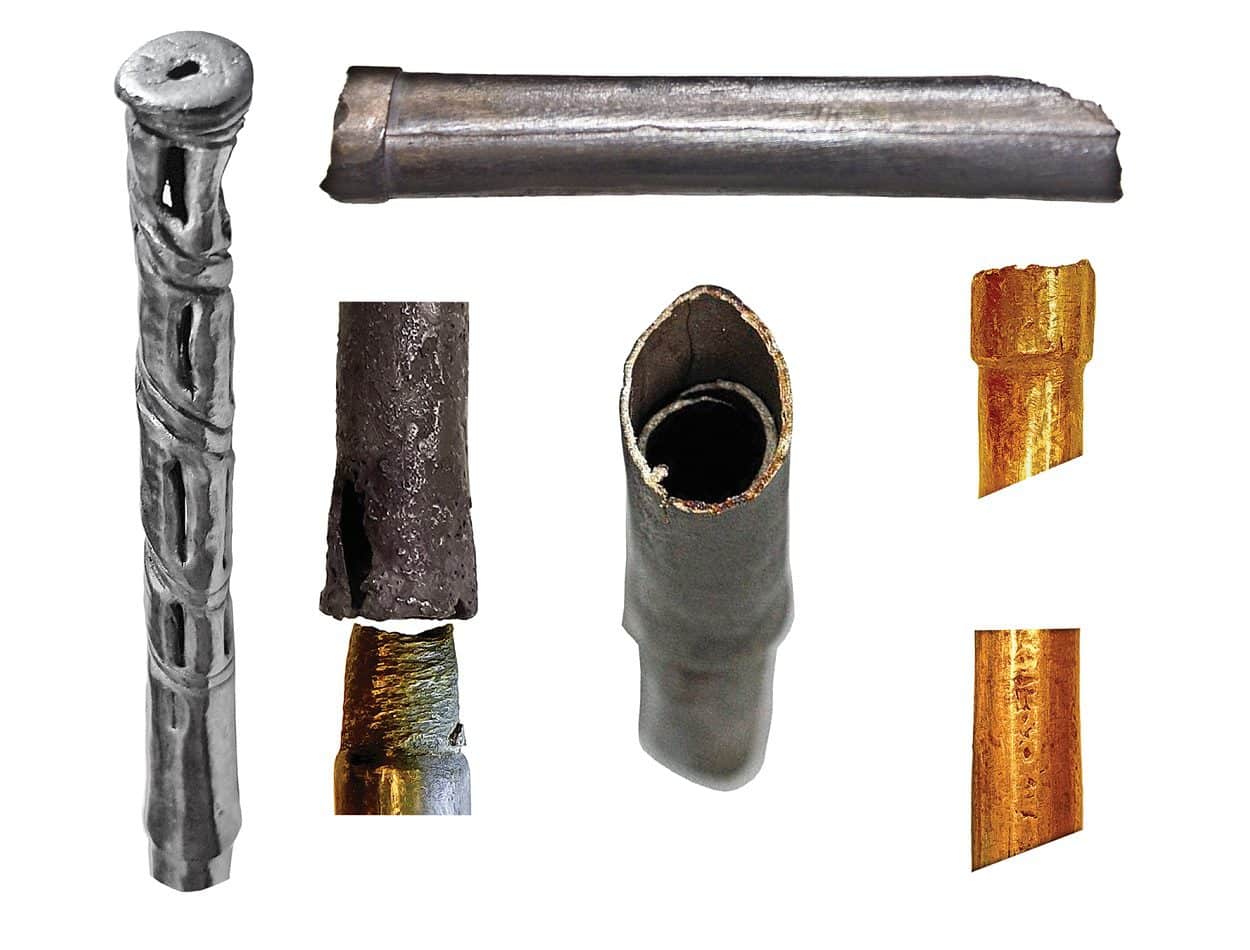An analysis of long ‘sceptres’ from a burial mound near Maikop in the Caucuses has been revealed to be the oldest example of drinking straws.
The study was conducted by the Institute for the History of Material Culture, Russian Academy of Sciences, St Petersburg, where researchers studied long silver and gold tubes ‘sceptres’ dating from over 5,000 years ago.
The tubes were first discovered in a burial mound in 1897 by Nikolay Veselovsky during excavations of the Early Bronze Age site of Maikop Kurgan in the Caucuses.
The burial mound is associated with the Maikop culture and is one of the most famous Bronze Age elite graves from the region, containing three individuals and hundreds of precious objects.
This included the eight tubes, each over a metre long and some with bull figurines on the stem. Earlier research identified them as sceptres or perhaps poles for a canopy, but the new study suggests that they were used as straws for drinking beer from a communal vessel during banquets.
“A turning point was the discovery of the barley starch granules in the residue from the inner surface of one of the straws. This provided direct material evidence of the tubes from the Maikop kurgan being used for drinking,” said the lead author Dr Viktor Trifonov from the Institute for the History of Material Culture, Russian Academy of Sciences, St Petersburg.
Using straws to drink beer was common in the early Mesopotamian civilisation of Sumeria from the 3rd millennium BC, with art depicting long straws placed in communal vessels. Dr Trifonov and the team identified several key similarities with such Sumerian straws, notably, most of them feature metal strainers to help filter impurities which corresponds with the Maikop tubes.
“If the interpretation is correct, these fancy devices would be the earliest surviving drinking straws to date as they are over 5,000-years-old” added Dr Trifonov. Find out more
Header Image Credit : Antiquity





